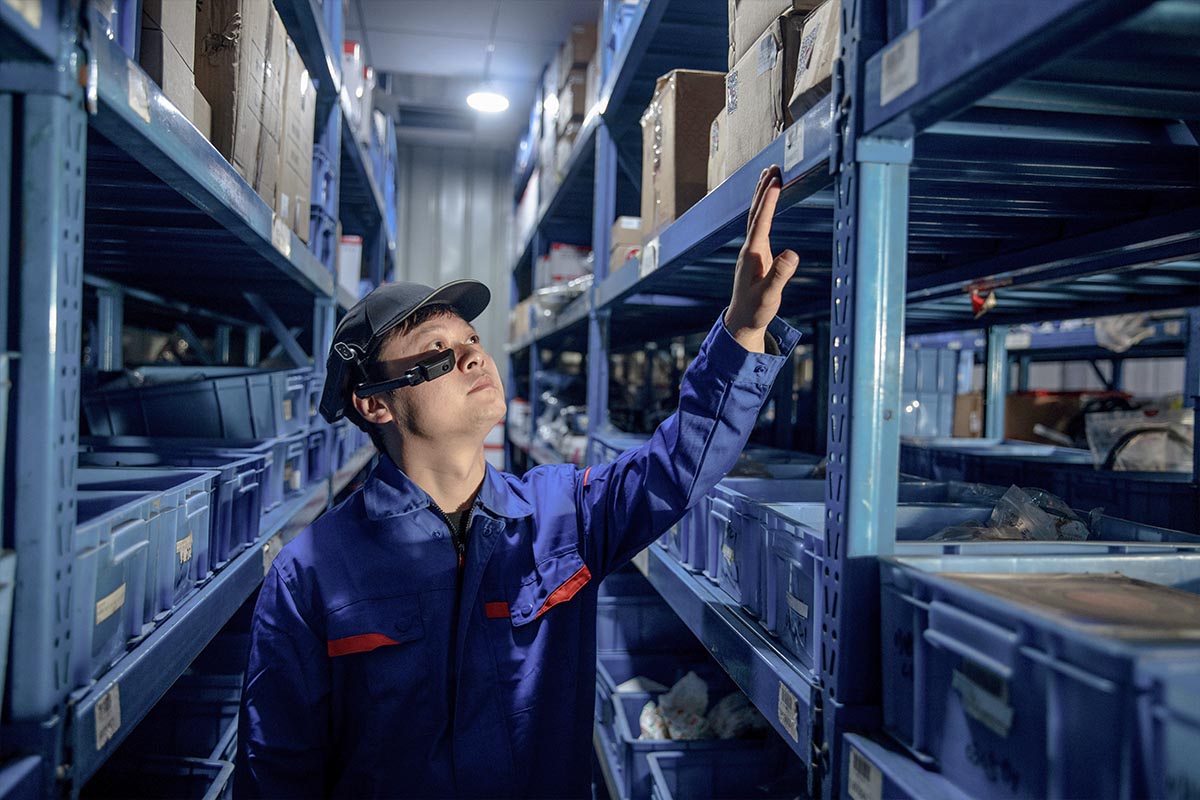THE BEST ASSISTED REALITY WEARABLES IN 2022


True AR smart specs have taken some time to develop and every corporation has shown interest in this revolutionary innovation; Including Google, Facebook, Apple, and others. It has been close to ten years since Google Glass debuted and whetted our appetite for wearable technology. Enterprises have benefitted manifold from the use of Augmented Reality Wearables. We are sure you agree that the most fundamental form of wearable technology is AR glasses. Realwear has been at the forefront of developing some of the best AR wearables out there. So, let’s discuss more augmented reality & how Realwear’s AR devices are changing the game for good.
Characteristics of AR-Ready Wearables
Assisted reality (AR) wearable headsets are worn over the eyes in place of traditional eyeglasses to enhance vision by creating and/or superimposing digital graphics, photos, videos, animations, and three-dimensional holograms over real-world environments as seen from the user’s perspective.
- AR devices allow you to view a screen on top of real-world settings in your line of sight, not replacing the user’s actual surroundings or scenery with virtual ones, to improve the user’s experience.
- It may use a camera, sensors, or other environment or object detection technologies to recognize a pre-loaded marker.
Features
Here are five benefits of using assisted reality gear, especially the RealWear HMT-1Z1 and HMT-1, the Realwear Navigator 500, and Moziware cimō devices in industrial digital transitions.
- For starters, voice-activated, hands-free wearables from RealWear are developed with worker safety in mind. Due to their durable construction and compatibility with personal safety equipment (PPE), such as hard hats, glasses, masks, ear protection, and hazmat suits, they can be used in practically any industrial setting.
- Employees are encouraged to focus on the task at hand when using hands-free controls and the thin, mobile micro-display shows visual data without blocking the line of sight.
- Enhances Expert Accessibility
- Expands Informational Accessibility
- Boosts Productivity and Efficiency
- lowers costs
Different Applications for Smart Glasses
1) Maintenance and repair, online assistance, and problem-solving
This is a particularly effective use case for VR and AR headsets since engineers can remotely aid mechanics to do challenging and complex installations and repairs on production floors without the engineer needing to travel, use their hands or waste their time. With or without AR headsets, these can remotely collaborate by using live videos, chat, and AR annotations to make clear what has to be explained during the process.
2) Education, learning, in-person and online instruction
Through the use of AR apps, historical landmarks can be displayed to pupils while having data and facts superimposed. Without even addressing what AR can accomplish for virtual learning, virtual AR educational tours are also conceivable to allow students experience sites with teachers giving facts and figures, enabling them to learn Geography, History, Religion, and many other courses/subjects.
3) Defense
The horizon, altitude, and airspeed are all displayed in real-time on virtual augmented-reality screens in front of combat pilots. Ground forces have access to real-time intelligence on the whereabouts of the enemy via their visual displays. It is often employed in fictitious military training.
4) Training and education in medicine
AR wearables are being used in surgery, where visual aids help simplify difficult processes, phrases, and practices. This also includes rounding, patient examinations, long-distance support, and student training. It may also be used in conjunction with imaging methods like X-rays and MRI.
6) Advertising and promotion
Applications that allow users to explore nearby businesses, such as restaurants, can be used with AR headsets, devices, and AR smart glasses. AR advertising can also be placed on the user’s perspective on ad platforms.
For enterprise organizations, the idea of our physical surroundings engaging with the digital world is interesting and new to many companies. Frontline workers are increasingly using assisted reality equipment, such as the Real Wear HMT-1. It improves their skills and provides instant access to expert guidance in real time. Don’t forget to read up about the new Realwear Navigator 500 device here.
For more details or information, contact us today.
- TABLET AR
Tablet AR mainly consists of tablets and other handheld devices that provide instructions through apps.
- WEARABLE AR
The wearable AR category includes hands-free devices like headsets and glasses that can apply sensory information to the user’s environment.
- PROJECTED AR
Projected AR refers to devices that can display interactive graphics onto surfaces. Projected AR is quite dynamic and can be used for various issues on the manufacturing floor.
AR in manufacturing has many applications, some of which are discussed below.
DATA ACCESS
AR simplifies managing data and information such as user guides and manuals. These need to be accessible, but it is difficult to organize them in such a way.
With AR in manufacturing, this categorization process is effortless, so you have instant access to all necessary information. This dramatically increases productivity and decreases downtime.
REMOTE EXPERTISE
At any large-scale manufacturing venture, equipment failure is bound to occur. The use of AR in manufacturing encourages efficient troubleshooting and repair action by allowing engineers and experts from all across the globe rapid access to the site.
This way, the issues can be diagnosed and resolved quickly and effectively. AR in the manufacturing industry would significantly cut the time, effort, and cost associated with such problems.
ENSURING SAFETY
AR in manufacturing allows the factory owners, clients, and officials, to take virtual tours of the site to ensure compliance with regulatory requirements. AR tools could also be used to detect possible hazards and malfunctions.
Combined with the rapid access to experts discussed above, AR in manufacturing can significantly strengthen the safety standards of factories.
EFFECTIVE TRAINING
Training efficacy and knowledge retention can also be increased by using AR in manufacturing. AR makes on-the-spot training more accessible and cost-effective as experts can provide their guidance remotely.
It also facilitates experience-based learning complemented by 3D models and other visual elements that aid understanding and retention. Progress can also be monitored effectively.
RESEARCH AND DESIGN
With AR technology in manufacturing, the creative research and design process can become more effective as the technology reduces the time and effort required to create physical prototypes and revise them. This fuels innovation and collaboration and eliminates some of the most strenuous parts of the research and design process.
These are only a few of how AR is successfully implemented in the manufacturing industry. The bottom line is that AR in manufacturing boosts productivity, performance, efficiency, and safety while reducing overall costs. In addition, with the growing labor shortage in the industry, AR in manufacturing is integral to building a future workforce.
Sketch AR
SketchAR can be used to bring out the artist. AR-enabled apps can now assist individuals in drawing more accurately. SketchAR enables people to unlock their artistic potential digitally.
The combination of high-performance computing, augmented reality, and artificial intelligence is fantastic. You’ll need two technology art phones and paper.
When you open your SketchAR camera, you will see virtual lines on the form. Grab a pencil and draw along the lines. Specifically, use AR to transform photos into art.
SketchAR users can also monetize their artwork and become a part of a larger community (more than 8 million creators).


CONCLUSION
In manufacturing, augmented reality (AR) transforms how we connect and engage. Augmented reality is a blend of digital and audiovisual elements that combines the physical and digital worlds. In contrast to virtual reality (VR), augmented reality (AR) permits interaction between computer-generated information and the actual environment. VR disconnects users from reality by using headsets to block their perception of virtual reality. AR, on the other hand, aligns the two. Whether it’s a Pokémon on the sidewalk, a new chair in your office, or guiding work instructions on your workstation, these displays incorporate a new reality into our existing one. AR improves production capabilities when used together, making it an ideal tool for Industry 4.0.
Realtime AR is the APAC gold channel partner and distributor of RealWear and Moziware AR wearable devices. We are offering hardware, software, and training for your organization.
For more information contact us.

